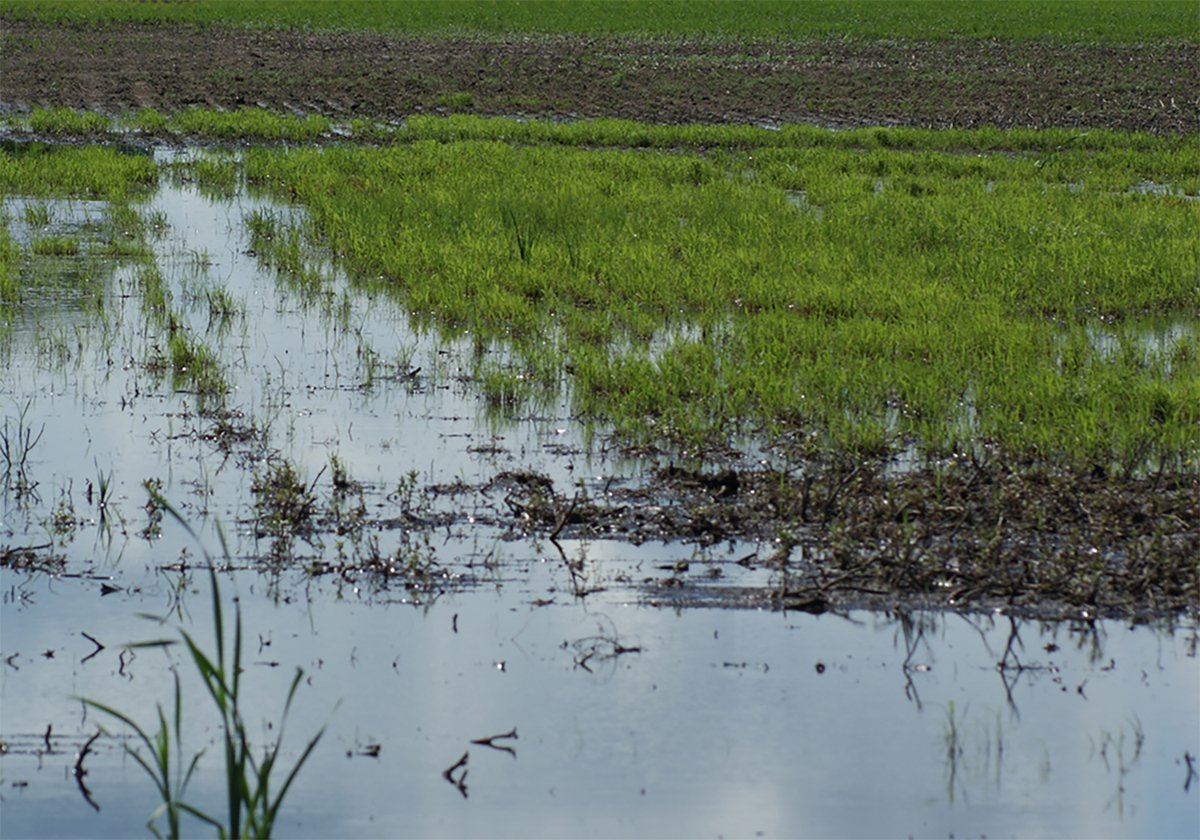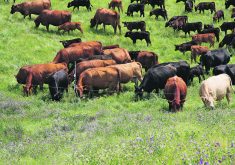Cash flow; Cossack future; Rodeo event; CWB obsession
Cash flow
Re: “Debt good news, says FCC” (WP, June 18, 2009).
In regards to Minister of Agriculture Gerry Ritz making a statement to the Senate that the agricultural primary producers are doing fine because debt-to-equity ratios are acceptable, (this) is extremely poor business sense.
The only time debt-to-equity ratios are worth anything is when you are retiring, selling out or trying to refinance your existing agricultural production base.
The thing that really matters is the potential of positive cash flow with which you can retire debt at a consistent rate and raise and provide for a family. I do not know of many primary producers who have been able to do that for many years without having an off-farm income or an oil well.
Read Also

Topsy-turvy precipitation this year challenges crop predictions
Rainfall can vary dramatically over a short distance. Precipitation maps can’t catch all the deviations, but they do provide a broad perspective.
I am very confused with the mindset of the federal government in regards to agriculture. They seem to put a lot of focus and attention on sustainable agriculture production practices. As well, they have an abundance of programs for environmental and food safety. These are all great ideas, but one thing they seem to ignore is the loss of the farmers/ranchers themselves. All one needs to do is research the Statistics Canada data and they can see that the average age of primary producers is climbing and at the same time the numbers of farms/ranches are shrinking.
Efficient use of Canadian agricultural land is not something that can be learned in a college professor’s class. Yes, you can learn all about the numbers of the business but you cannot develop the instinct and historical knowledge that goes with each given region and its particular climate patterns that are learned over time.
I think it’s time that the government address the real issue at hand: lack of consistent positive returns and incentives to continue proper usage of the Canadian production base by Canadians and Canadian primary producers.
If these issues are not seriously addressed then soon the production base will be vertically integrated by Cargill and like-minded mega food processors and retailers. When that occurs, this nation will no longer be in control of producing a sustainable food base for its citizens and the results of that will be very hard to swallow.
– Dan Pandolfo,
Northgate, Sask.
Cossack future
Re: July 9, 2009 headline in the Western Producer “Herbicide deal benefits farmers.” Who wrote that junk? Then I have to read the “spin” from the spokesperson for Monsanto and Bayer who were almost slobbering over themselves about how this was a good deal for farmers. It’s a good deal for Monsanto. It’s a good deal for Bayer. A good deal for farmers? I don’t think so. How can this be good for farmers when you have the two major seed companies agreeing to work together? This is just total control. I see nothing but more tech fees and higher priced seed. …
Then they hold up a straw for the future: us lowly farmers may have both Roundup or Liberty weed control in the same seed. They also have a yield gene and a nitrogen gene. Amazingly, all these genes are only bought out after the patent expires on Roundup Ready. They must think us farmers are all stupid. They have had these genes in place for at least two or three years already. Why do we have to wait another three or four years to use these “improvement” genes. I guess we are stupid. We all, including me, keep paying these tech fees.
My father-in-law’s family immigrated to Canada from Kiev, Russia. The Cossacks would ride into your yard and if they wanted a horse or cow or pig, they just took it. If you objected they just shot you. We are headed in the same direction. …
– Victor Hult,
Waseca, Sask.
Rodeo event
I was very confused when I saw the photo of team calf roping and the caption that read they were fundraising for breast cancer research and animal rescue in the June 18 issue. Team roping is very stressful and painful to the animals. Every year many animals suffer severe injuries to the neck muscles, internal bruising and possibly broken backs and legs. Many of these injuries are internal and therefore the spectators are unaware of the cruelty at rodeos.
Raising money for animal rescue by abusing animals is wrong and backwards. In my mind it does not make any sense to promote rodeos and subject animals to unnecessary amounts of stress and harm, while asking people to give their money to help animals. Why don’t you not do the show and give all that money to the animal shelter? Aside from the abuse of animals, I am also confused as to the fundraising for breast cancer research. Women are the majority of the breast cancer patients but rodeos draw the attention of men. It is great that they want to raise money for a good cause but maybe they should choose a different event next time.
– Laura Page,
Vancouver, B.C.
CWB obsession
Barry Wilson in the article “CWB obsession getting to be unhealthy for system” May 14, 2009, makes a valid point that the obsession with CWB debate has essentially drawn attention away from other important issues. He is right – obsession with the CWB has failed to produce meaningful results.
Last year wheat on the open market hit a high of $25 per bushel. Wheat became the second highest priced commodity next to red lentils, even surpassing the highs of canola. However, the CWB final payment for wheat (which is a cumulative average of an orderly marketing system) netted about $8 per bu. This number suggests that the CWB likely did not orderly market (selling an average amount of grain in each quarter), which is proclaimed by CWB supporters as the strategic advantage to the system. With the absence of any formal process of accountability one can only surmise the CWB sold and/or presold a large percentage of the crop early in the year when prices were much lower, failing to follow their own well promoted procedure. However, due to 56-year-old conventions lack of accountability still rules the operations and farmers on either side of the debate have no idea of how much wheat was sold, when, to whom and for how much. However, we can calculate and based upon open market average prices had the CWB … orderly marketed our grain last season, our cumulative average should have been significantly higher.
Obsessing aside, farmers who are noted for rooting out best deals in every other commodity appear to be complacent when it comes to this market loss of the CWB.
Instead of seeing the elections as a proactive measure, Wilson notes this fall CWB election turnouts were low, which he suggests means farmers think there are bigger agricultural issues to obsess about. It could however suggest the lack of relevance in the process and the actual voters list. When I ran for the CWB District 5, in random phoning, I would find myself speaking to many landlords, mostly former farmers and retirees who openly stated were no longer farming but had a vote, despite the fact they had not actually farmed for many years. There is something wrong where an absentee landlord can have as much clout as a farmer actually farming even one acre of ground much less the same as those farming over 25,000 acres.
However, with much to fix in farm policy including the CWB, Wilson is correct, obsessing from both sides and from the government has really become unhealthy, and obsessing is all it is. We need action to create a better CWB as no one on either side of the debate can afford to lose market opportunity, and that action needs to begin with the government and the board of directors. As I watch the wheat market rally again, I have to hope we have a second chance in one of my families’ lifetimes. With escalating value of wheat, farmers should no longer be forced to “make most of their income from non board grains” as Wilson notes they now do.
However, with CWB pricing a full $1 per bu. under the Ontario wheat board, and $1.70 under the U.S. farm price, it is obvious the reason why western farmers cannot depend upon wheat for income. (Source: Weber commodity newsletter May 19, 2009).
– Vicki Dutton,
Paynton, Sask.














